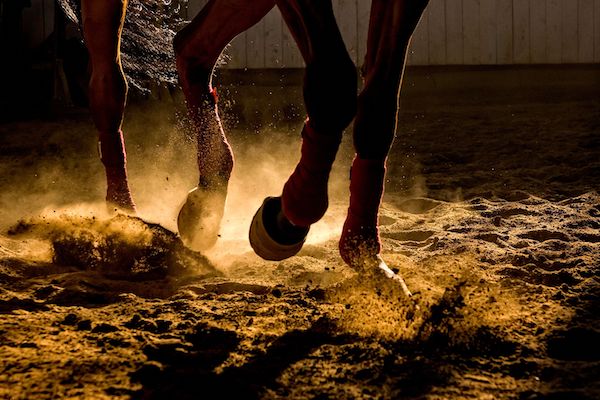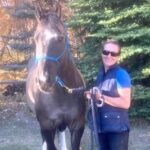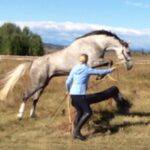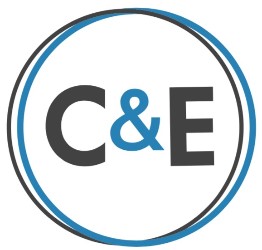
No matter how BIG your ambitions, start small
Systems – Habits – Rewards
Following a formula is different than applying the principles of a system that you understand. Learning Pilates principles, for instance, can help you to control a movement at any given time, and it’s that mindful focused movement that sets it apart from so many exercise regimes. If you stick to the principles, you cannot go wrong.
Understanding the importance of each interconnected principle (Concentration, Control, Precision, Centre, Breath & Flow) and then focusing on each and every element rather than racing to the perpetual “finish line” adds up to a better system and a process in which tiny changes can make a big difference. The same can be said with the horse’s groundwork: there are set principles which need to be learned and understood to yield the desired results and they provide a rock-steady training foundation on which to build.
Whether we are discussing our movement practice or that of the horse, how and when to apply the system often means breaking away from old habits and creating new ones. It also requires looking through a different lens when it comes to progress — especially over the long term.
With a system in place, mastering your body can then be reached through practice. Consistent, specific practice. The road may be long, with ups and downs, often surprises, but stay on it long enough and you will get there.
Improvement and growth are not linear, and a wider lens can show how it is not only the focus on the physical “doing,” but embodying every ‘thing” that makes an equestrian. How you move is one of them. Explore other less direct facets of your equine journey: consider everything else that can go into improving you or your horse and integral to your end goal. If one aims at improving each aspect by just 1 percent, together they would amount to monumental gains. Look into the unexpected areas too, such as the books you read (not all have to be on the subject of horses); nutrition for both you and horse; stretching methods; body work; horse trainer; the tack and equipment used; physiotherapy/massage, chiro, saddle fitter, farrier… the list could go on.
In his book, Atomic Gains, author James Clear’s approach resonated with me: it’s sensible and comes with a roadmap. His approach shows how effects compound over time if you can just get 1 percent better each day (with possible results nearly 37 times better after one year!) And the results come faster than imagined, although we generally put way too much emphasis on one big wow moment, convinced massive success needs massive action, putting pressure on ourselves to make monumental improvement, and not enough on making incremental meaningful improvements over a period of time on a daily basis. You get what you repeat.
“Habits are the compound interest of self-improvement “( Atomic Habits, James Clear)
We easily dismiss small changes as they don’t seem to matter in the moment; or we make a few changes and the results don’t come to us as quickly as desired so we return to our previous patterns and routines. By doing so we duplicate the bad habits or negative choices and these minor actions can compound into toxic results. This all happens because we think that progress should be linear, straightforward and quick. When it can take months or years to benefit from our work, we can get lost, and disconnected from our goal. (James Clear aptly names this the “valley of disappointment” in the book.)
However, all the hard work of your preparation (the groundwork) is never wasted, but rather stored, percolating away to show itself later, when you’ll be amazed at the accumulated gains. Often, with clients, I notice a lull, like a short pause before they have this huge shift where the gains become clear: mentally it’s a lightbulb moment; physically, it’s an ease and grace of movement showing total control and mastery. Along with a sense of strength and confidence.
Thus, in short, a slight change in daily habits can determine where you go, and how far. Ask yourself — are your habits putting you on a path to success? If you can make a specific plan of what to do, when and where, your strong implementation intention increases the odds that you will stick to those habits and follow through.
I think many of us try to change habits, knowing full well that the habit chosen will help our development, whether for us or our horse’s training BUT we do them without understanding the basic concept or principles discussed above.
It’s so easy to promise to vary training and do pole work, ground work, simple transitions to relax horse, as well as read that clinician’s book, watch training videos, improve fitness, etc. But how often do we make a specific time and place for this to happen? Most of us leave it to chance, hoping that we remember, or find the time to squeeze it into an already hectic schedule. If you translate woolly notions into a more solidified action plan, you’ll get clarity and focus. This is what is often missing, NOT the motivation of the individual.
And how often do we wait for the right day, week, month to start something? BUT if you have already set your intention to implement a new habit, you don’t have to wait for inspiration to strike. Simply follow your pre-designed plan. I tend to start anything new at the beginning of the week: it seems more motivating, like a fresh start. Historically I too often said YES to little requests that derailed me from my original but vague plan. Now I keep to a more fixed plan which gives my new habits the opportunity to get ingrained. Repetition of the practice over time.
I’ve also found everything ties into better habits horse-related. I keep fitter and so does my horse; I can track progress and see it build incrementally; general health, psychology, productivity, what I read, what I listen to — it can all play a part. When everything aligns, it’s highly motivating and productive. Being human, sometimes the process doesn’t go smoothly and then it’s a redo to get back on track. My goals don’t change — they are etched in concrete — but my plans are more drawn in the sand of the arena and can change as and when needed.
Of course, it’s super hard to focus on the process when the rest of the world is driven by outcome (meaning, wanting huge gains in the shortest time). Attaching yourself only to YOUR process, not social media’s expectations, will give you the greater outcomes you can achieve but it takes strength. it’s not about being perfect — just a little better than you were before.
Often things we choose to change or commit to are extremely challenging and can take a few months before improvements are seen. Movement according to the Pilates methodology generally yields fast results but changing entrenched patterns can be a challenge early on. Most people need consistency more than intensity.
“Intensity makes a good story, Consistency makes progress” ( James Clear)
Mastering the patience needed to delay the gratification, to wait for the accumulation of your efforts is darn hard. But if you trust the process, a specific movement practice can be a game changer. Because Pilates is a MIND-BODY experience you have to be mentally present at any given moment. Being with your horse and riding, the same is true.Being in THAT moment, and having patience seem to be the two most challenging yet important skills to have when being with horses. And the more you can improve both, the better you can understand your horse and therefore the better rider you can be.
Speaking of patience, let’s talk about practice making those marginal gains count, and add up. If you spend too much time focusing on perfection, or the fastest way to get results its usually ends up creating tension and occasionally immobility to go forward with your practice. Yes – do experiment with methods and learn from your mistakes. However, don’t just talk about the process, which may give you the good feeling of doing something; it can take you only so far. You need practical application of your plan through action for real results. The more you consistently repeat precise movement, the more your muscle patterning and technique is ingrained.Making a new behaviour automatic through repetition takes time and focus, as the structure of your brain changes to become more efficient. Active practice may take more effort to begin with than passive learning but as you tighten the neuro connections, the movement patterns become automatic, unconscious. How long does it take for this to take place, I’m often asked. It’s less about how many reps and more about the intensity of focus and quality of movement. (Versus mindless movement done for movement’s sake.)
None of us like criticism, we tend to avoid it. The same happens with taking action on our plans: a part of us wants to delay the chance of failure that comes with the territory of making new habits in a commitment to oneself. As humans we want the easy way, the line of least resistance, so motivation to change habits can be hard to find. I, too, wanted efficiency and results; I wanted logic and a clear vision of how to apply what I learned. I found all this through the Pilates methodology, which is why I find myself today sharing the gains with you.
Use a system, start with small marginal gains but repeat often making it a habit for BIG rewards.

Amy Krazizky
Pilates Teacher
***
Tracey and I have been training together for a while now; I strongly believe that we were meant to cross paths. She has helped me translate what I do with human clients through Pilates body work, into my own training with my horses and their body work. The result has been a positive development for me — a new specialization with equestrians. Please read on to hear from Equestrian Trainer Tracey Skinner ……
***
Tracey’s view
Addressing the little things add up to big improvements
In training horses, the more we break things down, the clearer our communication becomes and the better the understanding of our horses. When a horse truly understands what is being asked of them, they will do the task with eagerness and ease.
We tend to make things harder than they need to be, all too often by having too great an expectation or being so fixated on the end result that we miss out on all the small magical moments that lead us there. As a horse trainer, I see this often — and have even caught myself out many times. Expecting our horses to perform a task that we haven’t truly prepared them for means the ingredients for a successful execution are there in mediocrity, or not at all. A more experienced rider/handler might still be able to get the horse to perform the task, however, it will more likely reflect tension and rigidness rather with ease and grace.
There is a gracefulness to ease: it is a way of being that I strive for in my relationship with my horses, with myself, with life. When I celebrate the small wins, create healthy habits and am kind to myself – these are the times I feel ease and grace. When I become task orientated, too focused on end goals, is when I feel like I don’t have enough time, I am not as far along in life as I should be and out of balance in general. I don’t enjoy being in this space, I find it exhausting. We all fall into negative patterns, in everything we do: our training, our eating habits, sleeping habits, to name a few. The key is to recognize these moments, accept, then do something about it.
It is too easy to let little things slip here and there, but it doesn’t take too long until we’re dealing with an issue. I am quicker to catch a potential issue these days, having more insight and awareness about how important the little pieces are in the workings of the whole. I am more willing to take the time and break things down to a more subtle level than before and as a result can build back up on a stronger foundation.
As long as I can remember, I’ve dealt with back pain. From practicing Pilates, my body awareness is more fine-tuned now than ever before. I am stronger and move with better body mechanics, but it doesn’t mean that I no longer fall into negative patterns. It means that when I do, I have the awareness and the tools to help set myself straight again.
In horse training, most challenges come from misunderstanding. Misunderstanding comes from lack of clarity. How do we become clearer to our horses? We break things down. Believe me, every exercise we do can be broken down. Sometimes it’s prudent to reduce something to its simplest and then start from there. If we are less concerned about the end result, and more interested in the separate components of getting there, we put ourselves in the right frame of mind to enjoy the process. Before we know it, the very exercise we were having trouble with is working beautifully and with ease instead of a struggle of hard slogging, frustration and disappointment.
In my lessons, like in Pilates lessons, I follow the same principles of break it down, then rebuild it. It’s less about the end result. It’s about nailing all the little pieces that when working efficiently and effectively together, will result in a successful execution of the exercise. For example, canter leads can be a source of frustration for many riders. A common trend I have seen is students’ lack of knowledge of the pieces needed for a good lead departure. Some think they need to be cantering to feel like they are actually riding, so they miss many of the important steps that lead up to a good quality canter transition. Do they have the horse’s attention/are they on the aids? Where is the weight and balance of the horse being carried? Does the rider understand the sequence of the footfall in the canter? Do they understand the coordination of the aiding system that leads up to the transition? Do they understand where their own balance needs to be? How about the trot? If they don’t have a good quality trot, good luck with a successful canter departure. There is a lot that goes into the prep which means that there is ample room for miscommunication and unsuccessful execution. What is the first thing I do with a canter issue? Forget about the canter and focus on its parts .
The little things matter: awareness of body positioning in both the horse and the rider; specific precise communication to individual parts. When we work at perfecting these small but massively important communications, we start to understand how each exercise is an accumulation of small communications. Wouldn’t it be logical to conclude that our time is better spent practicing and improving those little things? I too often see riders who struggle, thinking that if they canter around more, despite doing the same thing that is not working, they will somehow magically improve the issue. All they are doing is strengthening the negative pattern. Fix it by working on the pieces instead.
Case in point. Quite often a rider’s posture and their horse’s posture reflect each other. We can only get so far communicating to the horse to pick up their ribcage, if the rider’s ribcage is collapsed; it will only make the ask more challenging for the horse. The desired canter lead may still be able to happen, but it won’t occur with ease. If the horse is where they need to be with the right bend and balance, and the rider is also holding their own balance in harmony with their horse, the pieces should align so that the canter transition can be executed with ease and grace. Otherwise. a rider collapsing on their inside ribcage will inadvertently put more weight into the inside seat bone, so the horse responds by carrying more weight on the inside hind, making the weight of the horse and rider in the wrong place for their desired lead departure. To help a horse that tends to fall in like this, we go back to groundwork and show the horse how to hold themselves, shoulders and ribcage up and carrying their weight on the outside limbs. Then we can move to specific exercises (such as under saddle, turns on the haunches, and shoulder-in) that help the horse understand the carrying of weight and balance in a specific hind limb.
For the rider, it’s very beneficial to do bodywork as well — specifically Pilates — to gain the necessary understanding and awareness of their own body balance. I’ve noticed a difference in my students who practice Pilates and can make the little changes in their bodies that tend to lead to big results. When I tell them to lift their ribcage, they have an understanding of their core and are able to feel it and fix it. Students with less awareness don’t even feel when they are contorted, let alone understand how to hold themselves in balance.
So now we can have the horse carrying its weight on the outside hind — the leg that lifts the horse into canter — freeing up the inside hind to step through into the desired lead. The weight is off the front end and the inside shoulder is “picked up,” giving more room for the inside hind to step through. The horse is attentive to the rider’s aids and the rider is also doing their part, picking their own ribcage up, putting more weight into their outside seat bone, consciously holding themselves in space and not offsetting the balance of the horse. When these ingredients are all in place, then the lead departure should happen easily.
I agree with Amy Krazizky whole heartedly – this goes for both horse and rider when she says:
“However, all the hard work of your preparation (the groundwork) is never wasted, but rather stored, percolating away to show itself later, when you’ll be amazed at the accumulated gains. Often, with clients, I notice a lull, like a short pause before they have this huge shift where the gains become clear: mentally it’s a lightbulb moment; physically, it’s an ease and grace of movement showing total control and mastery. Along with a sense of strength and confidence.”
My journey into horsemanship and Pilates has confirmed how much it is all about the little things. Changing negative habits and creating good ones, however small, leads to profound improvement.

Tracey Skinner
Equestrian Trainer
